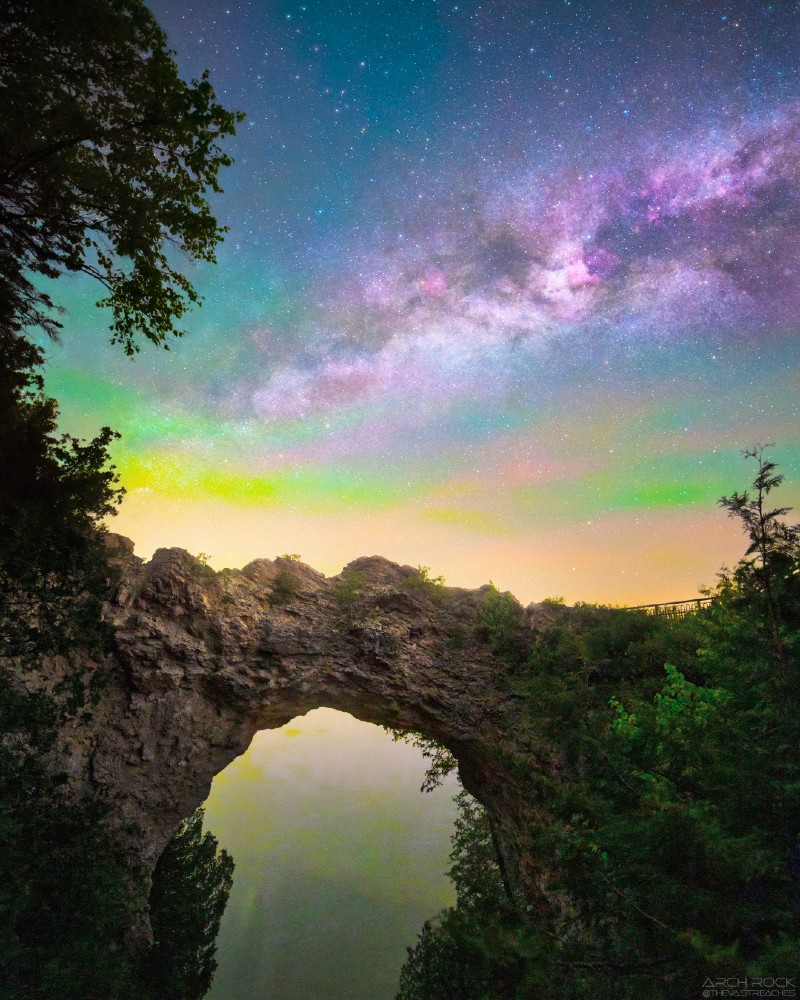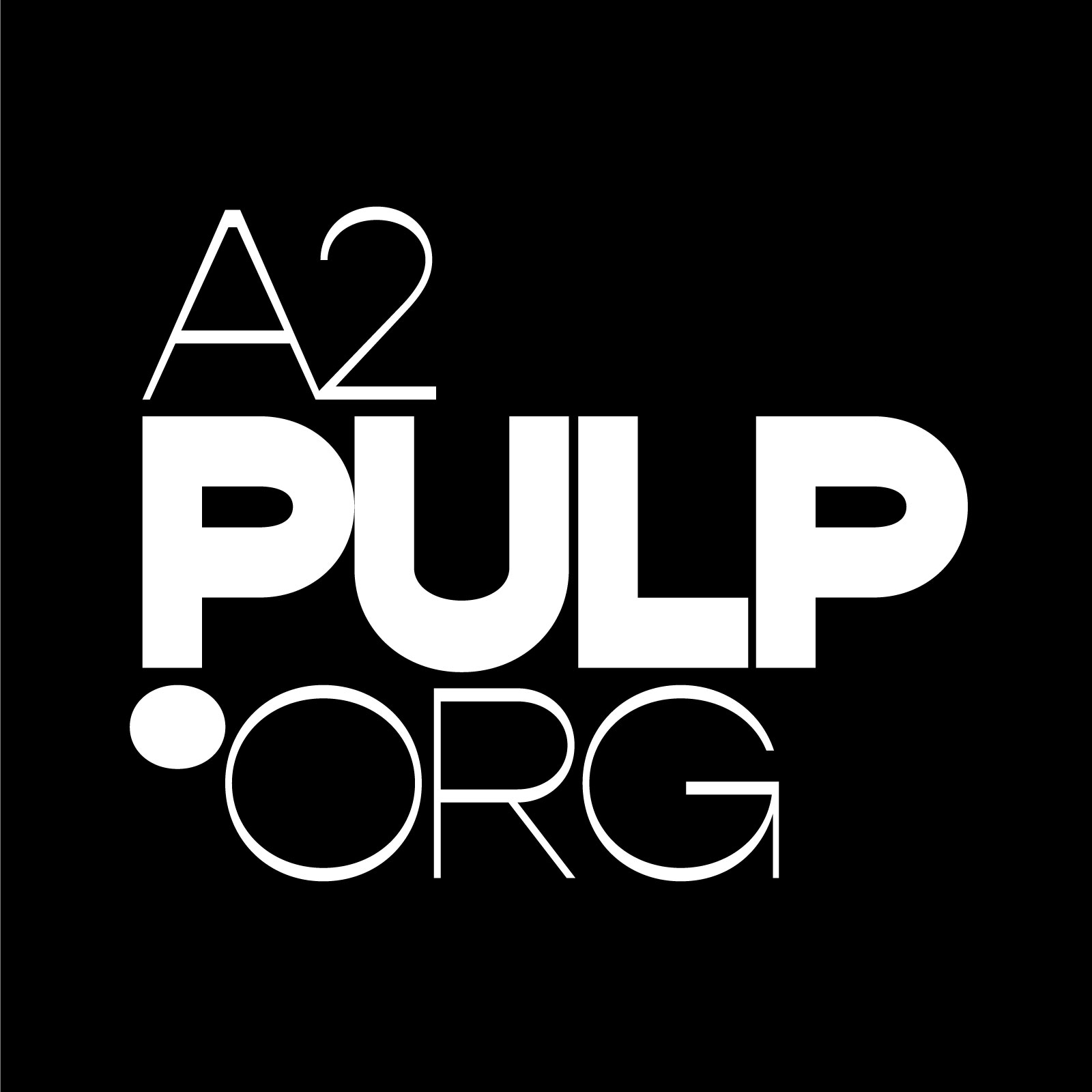Capturing the Cosmos: Jason Guenzel photographs the beauty of space from Earth

Jason Guenzel has a passion for exploring the cosmos with his camera.
The Michigan-based astrophotographer will appear at the Ann Arbor District Library's Downtown location at 7 pm on June 29 to discuss his love of astrophotography. Guenzel will talk about his journey to the stars, the equipment he uses, and how you can get started in this discipline, which mixes science and art. He'll also present many of his fascinating photos of the cosmos, explaining the specialized techniques he used to capture these breathtaking images.
I spoke with Guenzel ahead of his AADL appearance.
Q: How did you get started in astrophotography?
A: There’s a moment with everyone who gets into astrophotography where you look at the back of your camera and think, "Wow, this is actually happening."
I got into photography in the late 2000s with a digital SLR camera and started taking some sky pictures, mostly nightscapes—moon, planets—against a foreground. A few years later I had my first daughter and was home awake at night and thought it’d be nice to do something when she’s sleeping for an hour or so. So I decided to get a telescope and picked one that I thought could do double duty—both visual observing and astrophotography—but I never even put an eyepiece on it; I just strapped on a camera and started taking pictures. It was just before that when I had that “a-ha” moment, where I pointed my camera at the sky and framed up where I knew Andromeda would be, took a series of pictures and could actually see the galaxy. And that let me know this is possible and I thought, "I gotta get a telescope."
So I got a telescope around 2013. I enjoyed setting it up every night but didn’t get really serious about it right away. I thought it was cool but I couldn’t match what Hubble or professional telescopes were taking. Then I got involved in the Cloudy Nights forum and started seeing what people were doing and thought, "I can do this." Over a couple of years I built up the equipment, though that timeline has really accelerated now because the technology has vastly improved. When I was starting out, I had to figure it out on my own. Anyway, I stepped up from the DSLR to an astronomy camera, got that gear put together, and that system has largely been unchanged for six or seven years.
Q: Really? The same setup all this time?
A: Yeah, it gets great results. Over time I’ve built other systems that do other things—planetary, solar—but one of the big things with astrophotography in general is consistency. If you can get reliable and consistent performance over multiple nights then it’s gonna give you great results.

Q: You do your work in Southeast Michigan where we have several issues, from the light domes of Ann Arbor and Detroit—all south of where you are—and where it’s always cloudy. How do you compensate for this?
A: Well, I mostly image from my backyard, and that's mainly for convenience. There are techniques you can apply to overcome the light pollution problem, the main one being long integration time. If you’re shooting broadband—red, green, and blue visual spectrum—you just need to pack in as much integration time as possible. Some of my images get up into the 30-, 40-, 50-hour range of total exposure time, which averages down the random signal of light pollution so you can subtract out that effect. The other technique is narrowband imaging, which narrows down the range of wavelengths you’re looking at. That’s a huge equalizer for producing great results.
Q: You seem to understand that this hobby takes an incredible amount of patience and that an image can take weeks, months, or more to produce.
A: Yes, weeks and months. I even have some imaging projects where I’ll have to come back the following year because I didn’t get what I wanted. One example of that is a recent photo I shared—The Pillars of Creation in the Eagle Nebula, M16. I think that was three years of shooting. But I wanted to do it right. It’s so low on the horizon that I only get a couple hours a night, maybe, and the conditions aren’t great cuz it’s low and I have trees. With such a narrow window it takes a lot of time.
I have many projects on the back burner. I have a spreadsheet with all them and an embarrassing backlog of things I need to process. I really like collecting the data and it’s easy for me to do because I can automate it and sleep, but getting to assemble and process it takes time. I’m pretty sure I could not shoot for a year now and just process all the photos I have.
Q: Can you talk a bit about the idea of astrophotography as science versus art? How do you view the work you do?
A: I think it’s both. And not just a little, but a LOT of both. You can steer yourself in one direction or another too. If you like the science and it’s all you want to do and you don’t care about the artistry or building a pretty picture, you can just do variable star observing or planetary transits and stuff that’s hard into the science realm. And you can stay there and have a fruitful hobby doing that kind of thing. But there are a lot of people who come to it from an artistic side, a photography side. I’m an engineer and came up in science, so I get that whole side of it, but astrophotography for me is enjoying the beauty of the universe and the artistic side of it—the creativity. There’s plenty of room to be creative—creative in the way you capture objects, creative in the way you frame them, and creative in the way you shoot them. That extends to many types of nighttime photography.
And I enjoy the processing, too. There’s a huge opportunity to be creative if you shoot narrowband, in the way you assemble the wavelengths and color the image. There’s this big misconception that astrophotographers are just painting color. But in many regards, you’re using scientific data to create an artistic representation. There are choices you can make while processing that walk the line between science and artistic vision. Sometimes you know the target and want to be unique in your presentation, so you make choices that deviate from the pure science of the capture. But that doesn’t mean you’re making things up or creating a synthetic image.
Q: Most people don’t understand that when you take hours and hours of photos and stack them, you’re still left with a black image that you need to stretch to pull out any content. And once you start stretching it, you’ve already introduced an interpretation.
A: I think that’s part of the problem. If you talk to someone who doesn’t know how astrophotography works and you say you’ve processed an image, their immediate response is, “That’s fake. I want to see what the telescope captures.” And that’s usually just a flat black image. Part of the challenge there is that if things really looked like [your finished photo], you could look up in the sky and see every galaxy and nebula up there. The simple fact is that most of these objects are big enough that you’d see them naked eye if they were only bright enough. But they’re so faint that you can’t see them. We’re capturing such a narrow range of brightness that the final image is black until you stretch it, which means you take those different ranges of brightness and stretch them out so that they fill the full span from dark to light. And all of a sudden you can see all this detail that’s really there, just not visible to the naked eye. The human eye is a terrible optical instrument. There are a million different shades of grey there.

Q: You collaborated on an amazing photo of the sun recently. How did that come about?
A: Andrew McCarthy and I started a friendship over the hobby. He has a really big social media following and is an excellent photographer—lunar, solar, everything, really. I like solar imaging and we got to talking about doing a collaboration. We went into it thinking, How can we produce a spectacular image of the sun based on everything we’ve done? And we came up with a unique way to present it. He did a mosaic of the solar surface—so we had that—but the corona is lost in the glare of the sun, even in photographs. So we came up with the idea of blending the mosaic with an image of the corona taken during the 2017 eclipse to present all these structures of the sun as they would appear if it were possible to capture them all together. We ended up with a beautifully detailed solar surface and overlaying corona details against a backdrop of stars—all these layers of the sun that aren’t normally visible. It’s a unique presentation and a lot of people enjoyed that. It was our way of presenting the sun as we’ve never been seen before, taking all photographs and combining them. It got a lot of traffic on social media and in publications. Again, it walks that line of science and art. It’s not a scientific picture of the sun and we never claimed it was.
Q: And with that huge of a response, I suppose you got some complaints as well?
A: Of course. I’m an astrophotographer. I take photos of the sun and I process them. I do artistic renditions of them. But I don’t paint in details. I use the images I capture to create these views of outer space, and that’s the truth of it. I appreciate space art, but I don’t do that because my way of enjoying the hobby is to use the actual photos I take to make the image.

Q: In your photo of The Pillars of Creation from M16, the Eagle Nebula, I like how you showed that you can do something with your backyard telescope that even the Hubble Telescope can’t do—that is, zoom in and out on a wide field of view.
A: It’s tough with astrophotography because you take all this time to get the data and it’s hard in the end to say, "OK, well, there’s all this dark space that doesn’t look good artistically so I’m just gonna crop it off." You take this huge image that you worked maybe 30 hours to capture and you end up just looking at the very center of it. But if you have a photographic eye, and composition and framing are important to you, you don’t care about cropping that off. You’ll do mosaics or crops to get the framing just how you want, but you can’t be afraid to crop.
Q: What are some of your favorite photos that you’ve taken and what’s the most challenging?
A: I’ve been trying to get that M16 shot dialed in for three years. I spent a lot of time on it because I love that target and love to present it in a way that’s a little unique. So that’s definitely one of my favorites. A lot of recent photos are among my favorites just because my technique is evolving so it’s closest to what I like. That’s just the way it works. There’s a reason your current work doesn’t look like your old work—because you’re chasing your vision and your most recent stuff aligns best with that vision.
Another favorite is IC342, which is a galaxy that lies behind a lot of Milky Way dust. You get a wonderfully rich starfield and the coloration in the galaxy is unique because it’s behind a plane of dust, so it’s not the typical blues and golds of galaxies. It’s more of a rust color and there are tons of hydrogen alpha nebulae in there. I really like that one.
I do a lot of different types of photography, too—lunar, solar, planetary, and nightscape. I took a shot up on Mackinac Island of Arch Rock with the Milky Way behind it. That’s one of my favorite nightscape shots for sure. There’s lots of air glow up there and I did my due diligence to get the arch illuminated by taking long exposures.
And, of course, the solar one with Andrew.
Challenging? If you think astrophotography is a lesson in patience, planetary is the next level because it’s such an exacting process. You’re at such a long focal length where any minute error in collimation, alignment, seeing conditions, or telescope optics makes such a difference. It’s easy to get a bad shot of a planet.

Q: Is there ever a point where you figure you’re done with a particular object? That you can’t bring anything new to it?
A: I don’t think you’re ever done. If you are, then you’re probably getting out of the hobby. Even the moon is always changing, and that’s hard to appreciate. You think it’s always the same, but you can’t take a picture of the moon you took last month and compare it to the picture you took this month because the angles change. You can’t stack them on top of each other. So every picture of the moon is unique. Same with the sun. The sun is incredibly dynamic. Planets too. Nebulae not so much.
Q: What advice do you have for people who want to take that first step?
A: It really doesn’t have to be an expensive hobby; you can use what you have to get started. Some people get started with just a smartphone. Or maybe there’s an old DSLR sitting on a shelf collecting dust. Just get that out and get started like I did: Take a camera and lens and figure out where Andromeda is in the sky and take pictures of it. Same with the moon. From there you’ll quickly learn how to improve your shots if you’re interested in proceeding, whether that’s with a longer focal length lens or a sky tracker.
Some people stay with a landscape/nightscape setup and for that you only need wide-angle lenses. A sky tracker helps, but it doesn’t have to be incredibly expensive. You can get a used tracker for a couple of hundred dollars and it’s less than $500 if you’re buying new. If you want to jump into deep sky and go the whole telescope-mount route, you’re into it for a few thousand to start out. But you can always step up to that point.

Q: What tips do you have for beginners? I’m sensing it’s all about patience and time with this hobby.
A: Yes, patience and time. And you’ve got to be stubborn. You’ve got to want it or you’re never gonna do it. The other thing I’d say is never be afraid to make mistakes. You make a mistake and you always learn from that lesson. It’s a continuous improvement. If you jump into it with premium gear that automates the whole process, you don’t learn. You have to know some fundamentals to excel—to learn why this or that happened if only to prevent it from happening again. You have to make a lot of mistakes.
Q: What can expect from your program on June 29 at AADL?
A: I plan to take the audience through a little bit of my journey, how I got to where I am today, and to look at some of the images I took along that path, to understand some of the decisions I made. And I’ll talk a little about what you can do to get started in the hobby, what’s available, and steps you can take to start on your own journey.
Amy Cantú is a production librarian at the Ann Arbor District Library.
Jason Guenzel will present "Capturing the Cosmos: Exploring the Universe Through Astrophotography" on June 29, 7 pm, at the Ann Arbor District Library, 343 South 5th Avenue. The event is free. To learn more about Guenzel's work or to buy prints of his photos, visit thevastreaches.com.


































